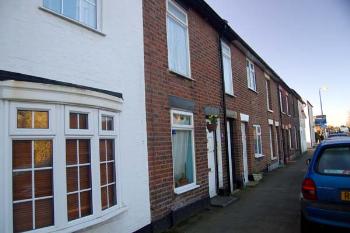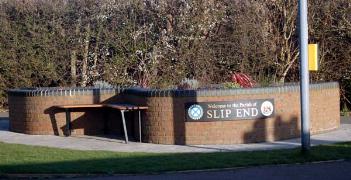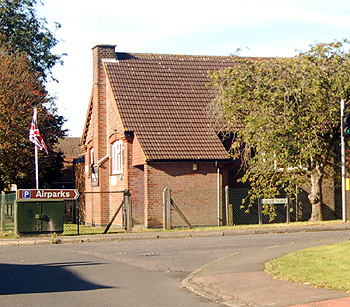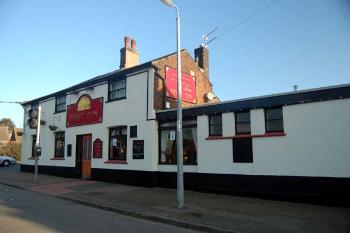The Community of Slip End in General

Original Victorian Terrace in Church Street March 2007
Landscape
Slip End, close to the Chiltern Hills, stands at a much higher elevation than much of Bedfordshire. The north-west end of Front Street stands about 538 feet above sea level and the south-east end about 549 feet. The church is about 520 feet above sea-level.
The underlying geology is of a type known, rather enigmatically, as Lambeth Group. It comprises clay, silt and sand and was laid down as recently as 55 to 65 million years ago in the swamps, estuaries and deltas of the Palaeogene Period. The soil is clay with flints formed up to 5 million years ago in the Quarternary and Neogene Periods.

Slip End sign March 2007
Name
The name probably comes from the Old English slyppe meaning slimy or muddy. Thus Slip End was the muddy end of Caddington. Given the clay soil this would make a certain amount of sense.

The Village Hall September 2012
Administrative History
Slip End is a very recent development. The land formed part of the ancient parish of Caddington. This parish was split between Bedfordshire and Hertfordshire until 1897 but Slip End was always in the Bedfordshire portion. The settlement at Slip End began only in the 1850s and 1860s beside a road, Front Street, laid out at the inclosure of Caddington in 1800. All the houses were built of locally made brick. Only thirty years after it began Slip End was the single largest settlement in Caddington parish, other than Markyate, which was soon to be transferred to Hertfordshire.
In recognition of the size of Slip End the civil parish of Caddington was known as Caddington & Slip End On 10th October 2000 Slip End was created a separate civil parish incorporating the hamlets of Pepperstock (which had been brought into Bedfordshire from Hertfordshire in 1965) and Woodside.
In 1878 a mission church was built by the Church of England at Slip End to serve the growing population. was built in 1889. In 1892 the new church became the centre of a new ecclesiastical parish which, curiously, was called Woodside rather then Slip End despite the fact that the church is much closer to the latter settlement than the former.

The Rising Sun March 2007
Population
In 2001 1,974 people were recorded by the census as living in the parish of Slip End and in 2011 it was 1,831.